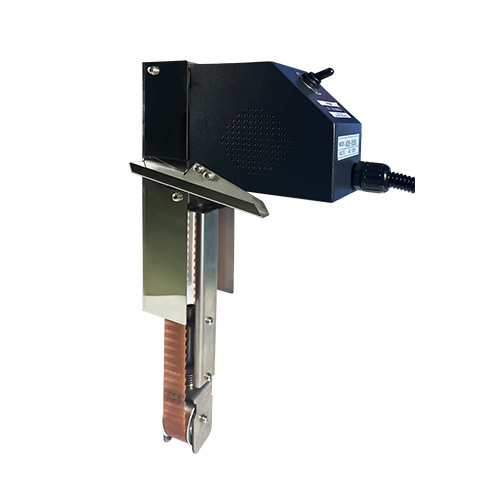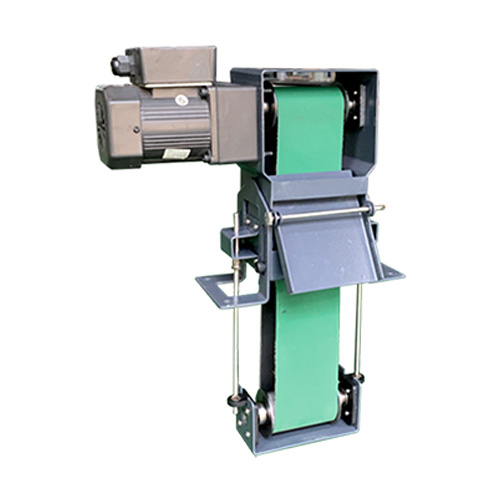-
WhatsAPP: +86 18706448138
-
Tengzhou, Shandong, China

How a Mechanical Pulse Generator Improves Accuracy
Discover how a mechanical pulse generator boosts precision in CNC and automation systems. Improve control and accuracy today.
Table of Contents
Introduction

Precision is the cornerstone of modern manufacturing and automation. In industries where even the slightest deviation can result in product defects or system failures, maintaining control over every movement is critical. One essential component that ensures such control is the mechanical pulse generator. This device allows for incremental, precise movement by generating discrete electrical pulses based on manual input.
Whether used in CNC machines, robotic platforms, or specialized optical equipment, mechanical pulse generators provide a level of accuracy that purely digital systems may not achieve, particularly when human interaction is involved. This article delves into the mechanics, benefits, and real-world applications of these powerful tools.
What Is a Mechanical Pulse Generator?
A mechanical pulse generator is a manually operated input device used to send discrete electrical signals, or pulses, to a control system. Each pulse corresponds to a specific, quantifiable movement, allowing precise positioning of motors or actuators. The device usually features a handwheel or knob that the operator rotates, generating feedback and control simultaneously.
Key Features of a Mechanical Pulse Generator
- Pulse Output Resolution: Most generators offer customizable resolution settings such as 25, 100, or even 500 pulses per revolution, enabling fine-grained control over movement.
- Click Feedback: Physical ‘clicks’ felt during rotation enhance operator awareness and input accuracy.
- Axis Selector Switch: Allows users to choose which axis (X, Y, Z, etc.) the pulses should affect.
- Compact and Durable Design: These devices are built to withstand harsh environments and long-term use.
- Interface Compatibility: Most units easily interface with CNC systems, PLCs, and motion controllers.
This combination of tactile feedback, precision, and flexibility makes the mechanical pulse generator indispensable in both manual and automated environments.
How a Mechanical Pulse Generator Enhances Accuracy

Precision Through Pulse Output
At the heart of a mechanical pulse generator is its ability to translate rotary motion into exact digital pulses. Each rotation of the handwheel produces a set number of electrical pulses, each of which moves the machine by a fixed unit. The result is unparalleled precision. For example, turning the generator slightly might move a CNC lathe tool just 0.01mm—enough to refine a cut without risking overcorrection.
This pulse-by-pulse control ensures that operators can incrementally move equipment into an exact position. In contrast to joystick or touchscreen interfaces that may result in overshooting or under-adjusting, the pulse generator allows for deliberate and measurable action.
Fine-Tuning Axis Movements
Modern machinery often involves multi-axis operations. A mechanical pulse generator is typically equipped with an axis selector, enabling users to control X, Y, Z, and sometimes even additional axes like A or B. This multi-axis support is essential for tasks such as tool calibration, mold alignment, and laser focusing.
The precision offered by axis-specific control dramatically improves the accuracy of setup and operation. Operators can shift between axes without interrupting the workflow, reducing downtime and avoiding misalignments.
Tactile Feedback and Operator Confidence
Unlike digital-only controls, the mechanical pulse generator provides tactile feedback with each click or pulse generated. This physical sensation reinforces confidence in movement, especially in high-stakes environments where mistakes are costly. The feedback also reduces cognitive load, allowing the operator to focus on the task rather than constantly checking a screen.
Furthermore, this manual interaction fosters muscle memory over time. Operators quickly become adept at estimating how many clicks are needed for a given adjustment, improving both speed and precision.
Applications Where Mechanical Pulse Generators Make a Difference
CNC Machines
In CNC lathes, mills, and routers, mechanical pulse generators are essential during manual mode operations. For instance, when a technician needs to align a cutting tool with a workpiece, using a pulse generator ensures accurate positioning without risking collision. During setup or maintenance, the generator acts as a fine-tuning instrument, making tiny movements to achieve the desired alignment.
These machines often support jogging modes, but jogging lacks the fine control and tactile responsiveness of a mechanical pulse generator. The manual pulse generator enables micrometer-level movement with each rotation, which is particularly beneficial in die machining and prototyping.
Robotics and Automation Systems
In robotic applications, pulse generators are used to manually position arms, grippers, or sensors. During the calibration of robotic arms, especially multi-jointed or multi-axis types, accuracy is paramount. Using a mechanical pulse generator during these phases ensures each part of the system is perfectly aligned, preventing cascading errors that can result from an imprecise setup.
They also allow technicians to troubleshoot motor behavior or test system responses incrementally, providing deeper insight into automation systems without relying on complex software tools.
Optical Equipment and Medical Devices
In sectors like microscopy, laser scanning, and medical imaging, the slightest positional error can skew data or compromise safety. Mechanical pulse generators provide the kind of ultra-precise manual control needed in these fields. For example, focusing a lens or aligning a sensor array with sub-millimeter accuracy is made significantly easier and safer with a mechanical pulse generator.
In medical devices like surgical robots or automated biopsy systems, these generators help with controlled calibration before patient interaction, ensuring that every movement is safe and calculated.
Comparison Table: Key Performance Attributes
| Performance Attribute | Description |
|---|---|
| Pulse Resolution | Determines how fine each movement is; higher PPR = greater accuracy |
| Click Feedback Sensitivity | Tactile confirmation of each increment ensures precise manual operation |
| Axis Control Capability | Enables seamless switching and control over multiple axes |
| Signal Stability | Consistent, noise-free pulses contribute to reliable system behavior |
| Durability | Long operational lifespan ensures accuracy over time |
| Interface Options | Easily integrates with CNC controllers, PLCs, or embedded systems |
| Ergonomics | Designed for long-term use without operator fatigue |
This table demonstrates the attributes that allow a mechanical pulse generator to achieve unparalleled precision, flexibility, and reliability across different industries.
How Pulse Resolution Affects System Accuracy
Pulse resolution, defined as the number of pulses generated per rotation of the handwheel, plays a crucial role in how finely a system can be adjusted. A low-resolution generator may produce 25–50 pulses per revolution, which is sufficient for rough positioning. However, high-precision applications often require 100–500 pulses per revolution or more.
Example:
- Low Resolution (25 PPR): Moves 0.1 mm per click — suitable for general use
- Medium Resolution (100 PPR): Moves 0.025 mm per click — ideal for alignment tasks
- High Resolution (500 PPR): Moves 0.005 mm per click — necessary for optical and medical applications
Selecting the right resolution impacts not just accuracy but also ease of use. Higher resolutions may require more turning, but they offer greater control for fine adjustments.
Operator Efficiency and Workflow Optimization

Reduced Setup Times
One of the major advantages of using a mechanical pulse generator is the significant reduction in setup times. Operators can make quick and precise adjustments without navigating through complex menu systems. This is especially valuable in environments with frequent changeovers, such as short-run production or prototype testing.
Faster setup leads to improved machine uptime and higher throughput, especially when the generator is used in tandem with digital displays for immediate feedback.
Error Minimization
Digital input systems can be prone to human error. Accidentally inputting an extra digit or selecting the wrong axis can lead to misalignments or, worse, damage. The mechanical pulse generator, with its tactile interface, minimizes such risks by offering more intuitive and constrained control.
It’s also easier to verify progress: each pulse represents a known quantity of movement, so it’s simple to double-check adjustments based on how many clicks have been made.
Enhanced Safety
Manual pulse control during maintenance or troubleshooting ensures that machine parts only move when the operator intends them to. Unlike fully automated systems where unexpected motion can pose hazards, the generator offers a level of manual oversight that enhances safety. This is especially important during machine servicing, where components are exposed.
Mechanical vs. Digital Pulse Generators: Which Offers Better Accuracy?
Though both types of pulse generators serve similar purposes, they operate quite differently.
Mechanical Pulse Generators
- Manual, tactile interface
- Highly suited for human-in-the-loop tasks
- Ideal for manual setup, calibration, and diagnostics
- Low risk of overcorrection
Digital Pulse Generators
- Programmed electronically
- Good for automated systems
- May lack feedback during manual input
- Requires display verification
In environments that prioritize human-machine collaboration, the mechanical pulse generator typically offers superior control and confidence. Digital systems may be faster for automated sequences but are often inferior for setup precision.
How to Choose the Right Mechanical Pulse Generator

When selecting a mechanical pulse generator, consider the following:
- Pulse Rate/Resolution: Match the PPR to the level of control your application requires.
- Axis Selector Capability: Choose a model that supports the number of axes in your system.
- Durability: Look for generators rated for millions of operations.
- Mounting and Integration: Consider panel-mount vs. standalone, and ensure connector compatibility.
- Environmental Resistance: For dusty or humid environments, opt for sealed or ruggedized units.
- User Ergonomics: Ensure that the size and design are comfortable for frequent use.
Choosing the right unit ensures you not only improve accuracy but also enhance overall system performance and longevity.
Conclusion
In modern industry, accuracy is not just a preference—it’s a requirement. From aerospace to automation, the need for precise manual control has never been greater. A mechanical pulse generator meets this demand with a blend of tactile responsiveness, high resolution, and rugged reliability.
Whether you’re improving your CNC shop’s setup process or calibrating a robotic system, this device is a critical addition to any precision environment. Its unmatched combination of pulse accuracy, multi-axis control, and operator feedback makes it indispensable.
Ready to improve the precision of your systems? Contact us today to learn more about integrating a mechanical pulse generator into your operations. Let us help you choose the right model for your needs and take the first step toward flawless control and performance.
FAQ
What is the main function of a mechanical pulse generator?
Its primary function is to convert manual rotary motion into discrete electrical pulses used for controlling the precise movement of machinery components.
How does it improve accuracy?
By allowing users to generate and control each pulse manually, it ensures that every movement is intentional, measurable, and repeatable.
What industries benefit most from these devices?
Industries such as CNC machining, robotics, medical devices, and optical inspection benefit significantly from their high-precision control.


